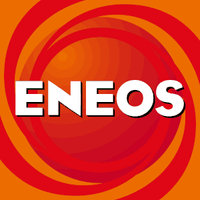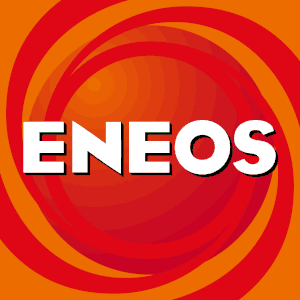
ENEOS Holdings Inc
TSE:5020


Utilize notes to systematically review your investment decisions. By reflecting on past outcomes, you can discern effective strategies and identify those that underperformed. This continuous feedback loop enables you to adapt and refine your approach, optimizing for future success.
Each note serves as a learning point, offering insights into your decision-making processes. Over time, you'll accumulate a personalized database of knowledge, enhancing your ability to make informed decisions quickly and effectively.
With a comprehensive record of your investment history at your fingertips, you can compare current opportunities against past experiences. This not only bolsters your confidence but also ensures that each decision is grounded in a well-documented rationale.
Do you really want to delete this note?
This action cannot be undone.

| 52 Week Range |
550.9
856.5
|
| Price Target |
|
We'll email you a reminder when the closing price reaches JPY.
Choose the stock you wish to monitor with a price alert.
This alert will be permanently deleted.
 ENEOS Holdings Inc
ENEOS Holdings Inc


 You don't have any saved screeners yet
You don't have any saved screeners yet

This is Tanaka speaking. I would like to thank our shareholders and investors for their continued support and advice on the business activities of the ENEOS Group. I will explain the financial results for the first quarter of fiscal 2020 based on the PowerPoint slides.
Please refer to Slide 2. Operating income for the first quarter of fiscal 2020 was JPY 21 billion, down JPY 28.3 billion year-on-year. Excluding inventory valuation, operating income was JPY 83.2 billion, an increase of JPY 14.2 billion year-on-year. Operating income declined largely due to the COVID-19 pandemic and as noted at the bottom of the slide, the decline in crude oil prices, which led to a JPY 62.2 billion inventory valuation loss in the Energy business and a significant decline in profit in the Oil and Natural Gas Exploration and Production business due to lower sales prices.
In addition, sales volumes of petroleum products, including jet fuel, declined as a result of travel restriction, and the production was reduced at the Caserones Copper Mine in Chile as a result of reduced manpower amid the pandemic. Despite negative factors related to COVID-19, operating income, excluding the inventory effect as shown in the middle, was up year-on-year driven by strong petroleum product margins in Japan primarily due to the time lag; a larger-sized deal in the real estate development subsidiary, NIPPO; increased sales of electronic materials amidst the teleworking trend and increased demand for telecommunications; and a decrease in expenses due to the time lag and the cost reduction activities.
Please refer to Slide 3. Our full year operating income for fiscal 2020 is projected at JPY 165 billion, excluding inventory valuation, unchanged from the previous forecast announced in May. In our previous announcement, we forecasted in -- we factored in the impact of COVID-19 on demand for petroleum and other products for the first 6 months, but not for the later 6 months of the year. The first quarter results of JPY 83.2 billion represents 51% of the full year forecast, but this was largely due to a significant contribution of temporary factors, such as the time lag in petroleum product margins.
On the other hand, we do not expect to revise our full year forecast due to deteriorating factors, such as petrochemical margins which are currently even weaker than in the April-June quarter and lower sales volumes in the second half of the year due to the impact of the pandemic. With regards to shareholder returns, we have not revised our basic policy outlined in our second medium-term management plan announced in May with a stable dividend of no less than JPY 22 per share and a 3-year total return ratio of 50% or more of net income, excluding inventory valuation.
Please refer to Slide 5 for the business environment. In April, the price of Dubai crude oil fell below $20 per barrel due to the impact of COVID-19 as well as the lack of agreement on production cut at the OPEC+ meeting held in March. Thereafter, the price rise again on that OPEC+ agreement on the extension of production cut, the lifting of the lockdown and the resumption of economic activity in many countries and the price exceeded $40 per barrel. The copper price was at the 210 cent level per pound at the beginning of the year, but it rose sharply to 290 cents per pound on expectations of recovery in copper demand following the resumption of economic activity in China as well as fears of reduced supply due to the spread of COVID-19 in copper ore producing countries.
Please refer to Page 6. The white oil product margins deteriorated significantly from March to April due to the decline in crude oil prices, but then turned back upward mainly due to the time lag caused by the recovery in crude oil prices. Paraxylene margins rose temporarily towards May as producers responded to production cut. But due to the lack of improvement in supply/demand, the margins declined again and remained stagnant.
Slide 8 provides details of P&L. As I mentioned earlier, operating income for the first quarter of fiscal year 2020 was JPY 21 billion, down JPY 28.3 billion from the same period last year. Excluding inventory valuation losses of JPY 62.2 billion resulting from the decline in crude oil prices, operating income was JPY 83.2 billion. Net income was JPY 3.5 billion, a decrease of JPY 19.1 billion versus the same period last year. After adjusting for NIPPO and other noncontrolling interest earnings, net income attributable to owners of the parent was negative JPY 4.9 billion.
From Slide 9 onwards, I would like to explain the operating income and loss by segment. The following chart explains the details of our main businesses. Please look at the bottom of the page, highlighted in gray. The other segment increased by JPY 11.7 billion to JPY 19.5 billion. This segment includes a gain on the sale of a large property in the NIPPO real estate development business, which is one factor that contributed to an increase in earnings this quarter.
Please refer to Slide 10. Excluding inventory valuation, the Energy business operating income was JPY 43.8 billion, an increase of JPY 12.1 billion year-on-year. Petroleum products, on the left, improved JPY 26.2 billion from the same period last year due to a steady increase in margins mainly due to a time lag despite a decrease in sales volume due to the pandemic and the resulting lower refinery utilization rate. Petrochemicals is down JPY 4.4 billion due to a decrease in sales volumes mainly for paraxylene. Electric power improved by JPY 3.1 billion due to an increase in the number of contracts and sales volume, in line with the nationwide rollout of ENEOS Denki. Materials declined by JPY 12.8 billion due to lower lubricant sales volume as auto manufacturers' operations declined due to the impact of COVID-19, inventory adjustments by customers and lower needle coke sales volume as a result of lower electrode demand caused by weaker steel demand.
Please refer to Slide 11. Operating income in the Oil and Gas Exploration and Production business declined year-on-year by JPY 12.5 billion to JPY 700 million. Sales volume increased by 21,000 barrels per day to 120,000 barrels per day, thanks to the contribution of the Mariner Oil Field and the Culzean Gas Field, which commenced production in the middle of the previous year. As a result, sales volume was positive JPY 2.4 billion. Expense and other was negative JPY 4.4 billion. Crude oil price deteriorated by JPY 10.5 billion due to the decline in oil and gas prices.
Slide 12, please. Operating income of the Metals business increased by JPY 2.9 billion to JPY 19.2 billion. Functional materials and thin film materials was up JPY 3.4 billion due to increased sales driven by increased demand for data transmissions for telework and online learning. Mineral resources saw a decrease in production volume by 4,000 tons to 36,000 tons due to the reduced manpower at the Caserones Copper Mine designed to prevent the spread of COVID-19. On the other hand, copper prices rose from the beginning of the fiscal year to the end of June, resulting in a JPY 3.1 billion improvement in earnings. For smelting and recycling, while the sulfuric acid market deteriorated, high prices for precious metals were a positive factor, resulting in a generally similar level as in the same period of the previous year. Corporate expenses and others is down JPY 4.4 billion due to the impact of internal transactions on consolidation.
Page 13, please. I will start with the consolidated cash flow shown in the right. The 2 cash flow figures as shown, I will explain the cash flow after the repayment of lease liabilities shown by the dotted line, which is the basis for the second medium-term management plan. Operating cash flow was an inflow of JPY 167.9 billion, including operating income of JPY 83.2 billion, depreciation and amortization of JPY 58.8 billion and a decrease in working capital due to lower resource prices of JPY 25.9 billion. Investing cash flow was an outflow of JPY 82 billion as capital investments and loans were postponed due to the coronavirus pandemic, resulting in a free cash flow of JPY 85.9 billion. Subtracting JPY 41.5 billion in dividends and others, net cash flow was an inflow of JPY 44.4 billion. The balance sheet is shown on the left-hand side. Net interest-bearing debt, excluding cash at hand, decreased by JPY 48.5 billion to JPY 1,850.3 billion mainly due to the JPY 44.4 billion in net cash inflow. As a result, net D/E ratio was 0.7x and equity ratio 29.1% as of the end of June 2020.
Slide 14, please. I would like to take you through main topics from April to date. As I explained earlier on the cash flow slide, we assessed the impact of COVID-19 and minimized the number of cash-based investments during the recent period. On the other hand, we steadily proceeded with the development of growth businesses, in line with the long-term vision and second medium-term management plan.
In the Energy business, in July, we concluded an agreement with the Shizuoka Prefecture on the establishment of a next-generation energy supply platform to realize the next-generation energy supply for and by the local community as well as various community services. We began collaboration, alliance and investment together with known industry players with the aim of improving the efficiency of core businesses, expanding renewable energy businesses and creating innovative businesses. In May, the group commenced commercial operation of the Muroran biomass power plant as an environmentally friendly renewable energy source.
In the Metals business, we have increased our capacity for electronic materials to meet the growing need for advanced materials, in line with the advancement of IoT and AI. We believe that the scenario in 2040, which we have outlined in our long-term vision, will not change even in the face of the COVID-19 outbreak. We will continue to accelerate structural reforms and steadily develop and strengthen our growth businesses as we work towards the realization of the long-term vision.
The rest of slides are just for your information. Slide 16 shows the key assumptions, and Slide 17 shows details of sensitivity analysis.
This concludes my presentation. Thank you very much for your kind attention.
[Statements in English on this transcript were spoken by an interpreter present on the live call.]